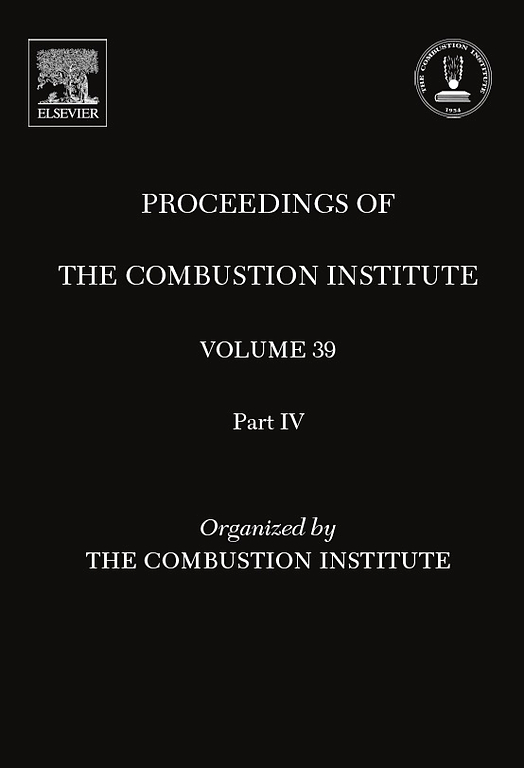3D flame surface curvature analysis from reconstructed scanning across spherical expanding flames
IF 5.3
2区 工程技术
Q2 ENERGY & FUELS
引用次数: 0
Abstract
We analyze 3D reconstructed surfaces based on previously reported high frequency measurements of flame edge location across expanding flames using Mie scatter. For the first time, principal curvatures of flame surfaces are estimated from eigenvalues of the second fundamental forms of the reconstructed surfaces, allowing the determination of the statistics of mean and Gaussian curvatures as a function of time and thus flame mean radius. Measurements and analysis were made for both lean methane and hydrogen mixtures as a function of time and turbulence levels. The mean 3D flame curvature was found to be inversely proportional to flame radius, and relatively insensitive to turbulence intensity, even in the case of larger, more planar flames. Mean 3D curvatures across the flame brush were determined to be positive (convex) towards the reactant mixture at the leading edge, and negative (concave) towards the trailing edge, as predicted from DNS measurements. The mean and probability distributions of 3D mean curvatures were found to be significantly different than 2D curvatures extracted from the central planes, with the 3D measurements showing much narrower distributions and lower values. Differences between 3D and 2D measurements were different by an order of magnitude in the case of hydrogen flames, possibly owing to the onset of thermodiffusive instabilities which affect the local fine structure of the flame.通过对球形膨胀火焰的重建扫描进行三维火焰表面曲率分析
我们根据之前报道的利用米氏散射对膨胀火焰的火焰边缘位置进行的高频测量,对三维重建表面进行了分析。我们首次从重建表面的第二基本形式特征值估算出火焰表面的主曲率,从而确定了平均曲率和高斯曲率随时间变化的统计量,进而确定了火焰平均半径。测量和分析了贫甲烷和氢气混合物与时间和湍流水平的函数关系。结果发现,平均三维火焰曲率与火焰半径成反比,并且对湍流强度相对不敏感,即使是较大、较平的火焰也是如此。根据 DNS 测量结果的预测,整个火焰刷的平均三维曲率在前缘向反应物混合物方向为正(凸),在后缘为负(凹)。三维平均曲率的平均值和概率分布与从中心平面提取的二维曲率有显著不同,三维测量值的分布更窄,数值更低。在氢火焰的情况下,三维和二维测量结果的差异达到了一个数量级,这可能是由于热扩散不稳定性的出现影响了火焰的局部精细结构。
本文章由计算机程序翻译,如有差异,请以英文原文为准。
求助全文
约1分钟内获得全文
求助全文
来源期刊

Proceedings of the Combustion Institute
工程技术-工程:化工
CiteScore
7.00
自引率
0.00%
发文量
420
审稿时长
3.0 months
期刊介绍:
The Proceedings of the Combustion Institute contains forefront contributions in fundamentals and applications of combustion science. For more than 50 years, the Combustion Institute has served as the peak international society for dissemination of scientific and technical research in the combustion field. In addition to author submissions, the Proceedings of the Combustion Institute includes the Institute''s prestigious invited strategic and topical reviews that represent indispensable resources for emergent research in the field. All papers are subjected to rigorous peer review.
Research papers and invited topical reviews; Reaction Kinetics; Soot, PAH, and other large molecules; Diagnostics; Laminar Flames; Turbulent Flames; Heterogeneous Combustion; Spray and Droplet Combustion; Detonations, Explosions & Supersonic Combustion; Fire Research; Stationary Combustion Systems; IC Engine and Gas Turbine Combustion; New Technology Concepts
The electronic version of Proceedings of the Combustion Institute contains supplemental material such as reaction mechanisms, illustrating movies, and other data.
 求助内容:
求助内容: 应助结果提醒方式:
应助结果提醒方式:


